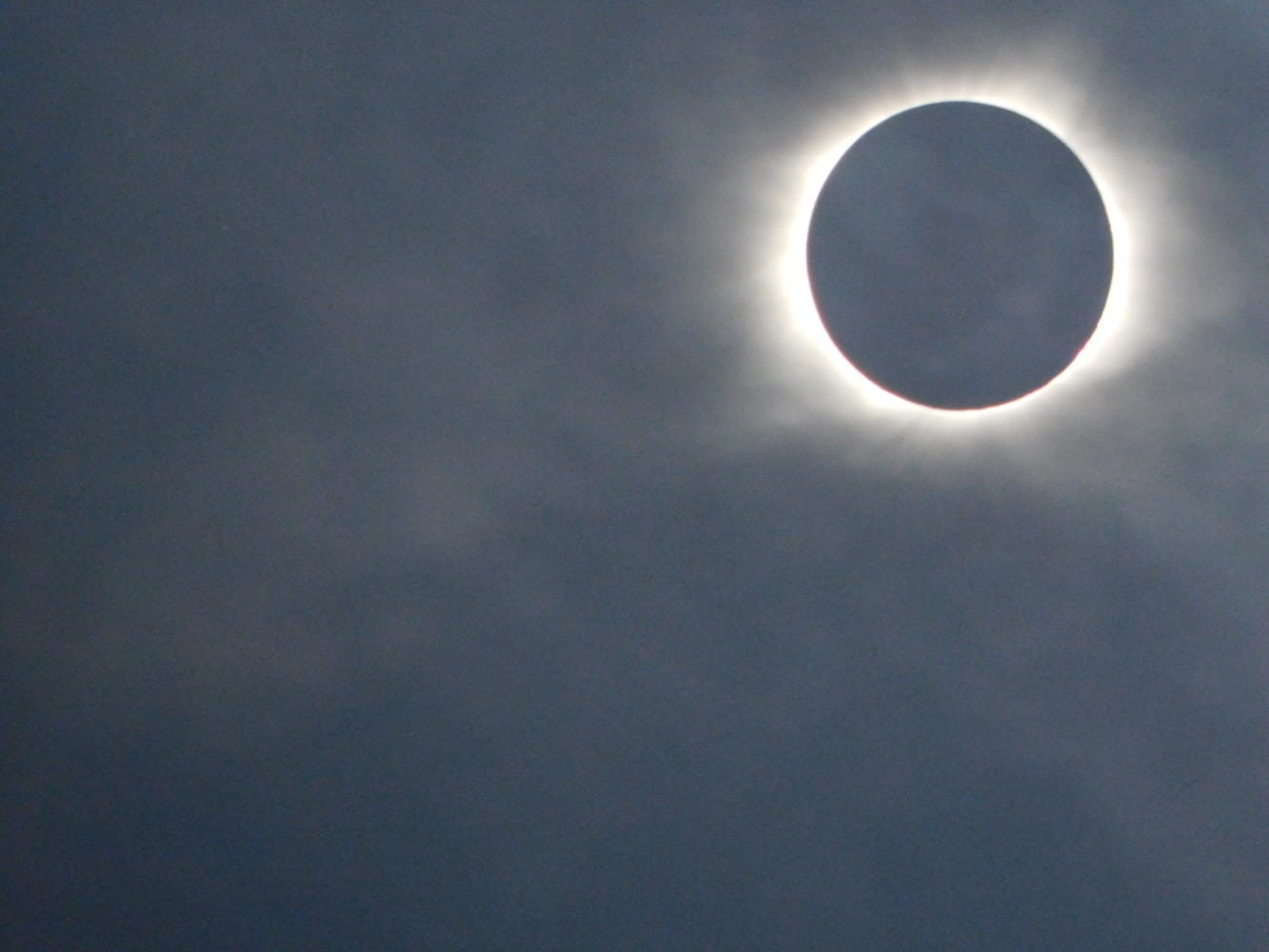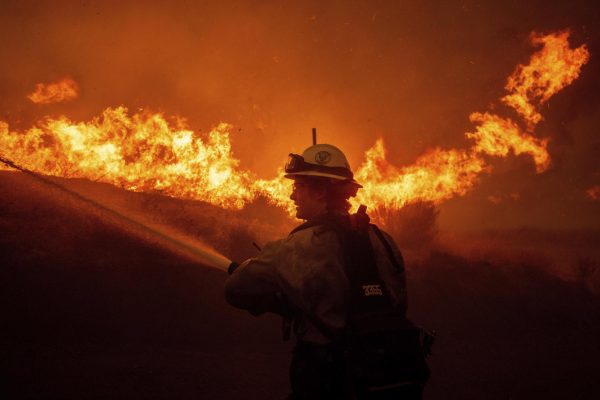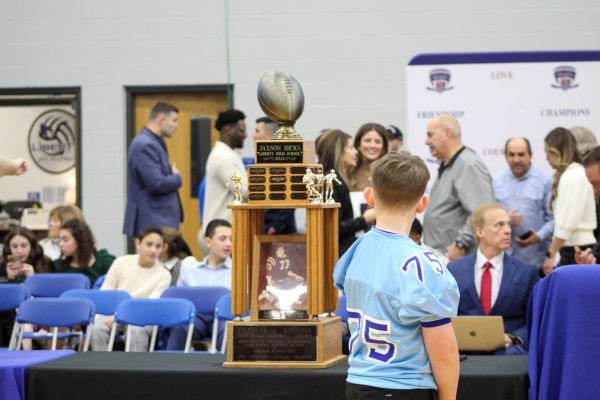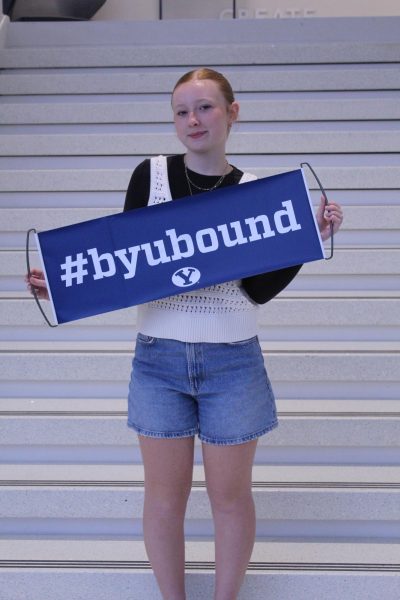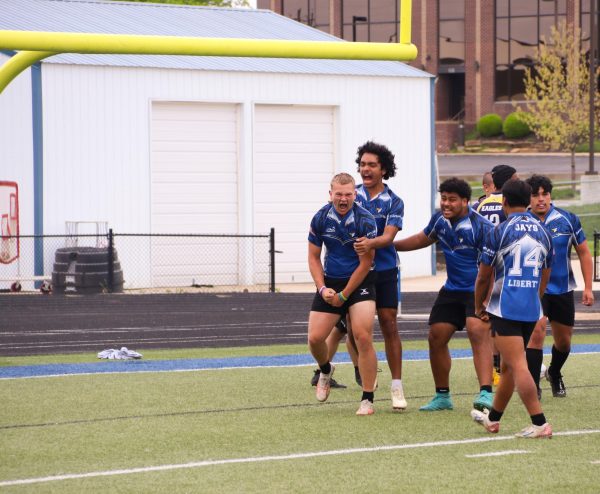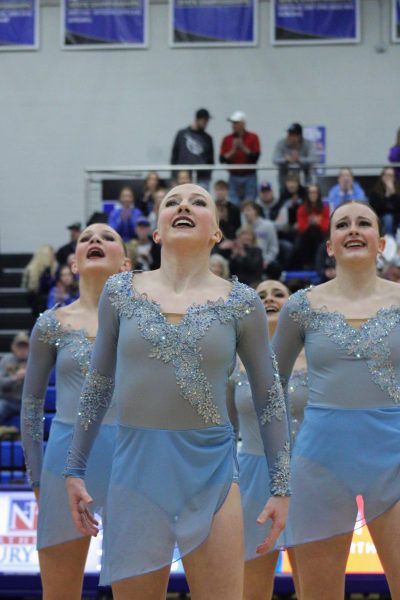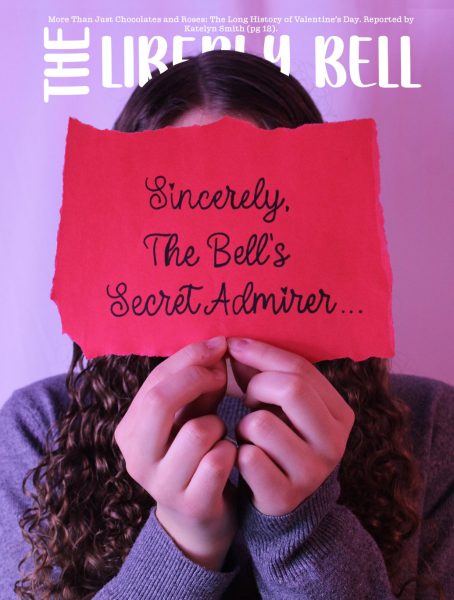Dark Side of the Moon
Senior Timmy Rondomanski was part of the 1,800 students on the LHS football field during the school day, wearing safety glasses provided by the district, to view the complete eclipse. Photo courtesy of Timmy Rondomanski
August 22, 2017 — The entire student body of 1,800 students watched in awe as the moon broke the speed limit at 1,900 miles per hour, casting a complete shadow over the sun on August 21. This was a total solar eclipse – the first one in Missouri since 1869 and the first one in the U.S. since 1979. While the eclipse began around 11:41 a.m., “totality,” or the complete coverage of the moon over the sun, didn’t start until 1:08 p.m. It lasted two minutes and five seconds in Liberty.
The path towards the total eclipse started in Oregon and made its way down to South Carolina, passing right over Liberty High School.
Students and staff spent almost a full hour outside watching the eclipse from the football stadium and other viewing areas behind the school. The eclipse was viewed through the free custom safety Liberty Public Schools glasses provided to every student. There was a massive combination of students sitting on the turf watching and students standing and cheering.
Even though there was a stormy and cloudy weather scare in the morning, the students’ eagerness was not deterred. The weather cleared just long enough for the eclipse to be visible and came back shortly after it was over – a perfectly timed storm.
“Up to it I was really excited because I didn’t think we were actually going to see it because the clouds were covering it,” sophomore Tepary Cooley said. “Then we saw it I was super happy.”
Along with the moon blocking the sun and a downward shift in temperature of five degrees, a news helicopter flew above the stadium to get footage of the sea of students.
“During the totality, it was super dark. You could see the individual beads and corona of the sun and you could see some stars,” Cooley said. “When we went outside and there were clouds and lightning earlier, it was super cool when it cleared up enough for us to see it.”
As soon as totality hit, there was a roar of excitement. Staff and students were cheering and clapping, their faces turned to the sun as they were able to finally take their viewing glasses off.
Aside from the once in a lifetime view, the eclipse was a learning opportunity used by many teachers.
“The wide-open space allowed people to see the darkening effect off the eclipse, which is really cool,” science teacher Ryan Brewer said. “Having so many people there experiencing it together, you could just feel the excitement from all of the students.”
Students discovered there was a difference between learning about the total solar eclipse and actually experiencing this once-in-a-lifetime moment.
“I had my students look up and draw the different stages of the eclipse,” Brewer said. “All the stages we talked about were visible and I think the kids really enjoyed it based on the comments, clapping and gasps I heard. I thought it was really sweet.”
Sophomore Izzie Bates agreed. “During it, it was awe-inspiring,” she said. “I had seen pictures and stuff but to see it up close and realize this was actually happening was really cool.”
Shortly after totality, students shuffled back inside to classes. There was chatter of the eclipse for the rest of the day. Thunder, lightning and rain returned to signal the eclipse day had ended.


